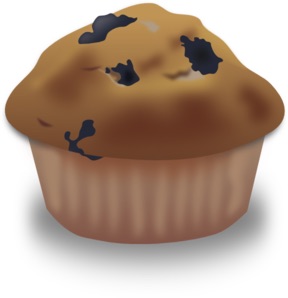Header logo
header top contact widget
Learn More Blog
Limit Oral Acid That Can Erode Tooth Enamel.
Posted on May 23, 2023 by William J. Claiborne, DDS MS
Americans love a beautiful smile. While a gap in a smile is unappealing, what occurs below the gum line can be detrimental to one’s overall health.
Losing a natural tooth means its roots are no longer present in the jaw bone. This leaves an absence of stimulation to the jaw bone that helped to maintain healthy bone mass. When the jaw bone declines in height, the teeth on either side are at risk.
As a periodontist, an area of my specialty is in the diagnosis and placement of dental implants. One of the reasons we recommend dental implants to replace natural teeth is their ability to recreate stimulation to the jaw bone. In addition to adding to the appearance of a smile, your smile’s health is important to many aspects of your health, including longevity.
Studies are finding that adults who lose teeth have shorter lifespans. For instance, a study cited in Dentistry Today (Feb. 2017) shared results of assessment of over 15,000 adults. They had follow-ups after 3 and a half years.
“After adjusting for cardiovascular risk factors and socioeconomic status, every increase in category of tooth loss was associated with a 6% increased risk of major cardiovascular events, 85% increased risk of cardiovascular death, 81% increased risk of all-cause death, and 67% increased risk of stroke. The risk increase was linear, with the highest risk in those with no remaining teeth.”
In our attempts to live healthy, long lives, people are more conscious these days of what they eat, the importance of staying active, and preventive screening. Obviously, keeping natural teeth and having good oral health is an integral part of overall health.
In this article, I’d like to focus on an area that can increase the risk of tooth loss, yet is oft-unknown – oral acidity.
The digestive process begins in the mouth. While chewing, oral acids are added to saliva. These acids begin to break foods down so, once swallowed, stomach acids continue the process.

While these digestive acids are highly beneficial, they can be challenging to tooth enamel, so strong it can soften tooth enamel. And this happens every time you eat or drink. Once activated, the acid flow lasts 20 – 30 minutes. So, when you begin munching popcorn while watching a movie, the acid attack doesn’t subside until a half-hour after you have the last handful.
As potent as oral acids are, the potency becomes even worse when mixed with acidic foods and beverages. Foods and beverages such as citrus, tomatoes, coffee, spicy foods, and colas ramp up the level of acidity taking place in the mouth.
We believe that knowing what poses risks to your teeth can help you be more proactive in avoiding weakened enamel. These include:
• Colas: One of the biggest challenges for teeth is sipping a cola over an extended period of time. From the first sip, your mouth is getting a double dose of acid — from both natural digestive acids AND from the acidity in the beverage. When these colas are sweetened, you get a double-dose of harm to teeth. Sugar sets off a process that breaks down tooth enamel while super-charging the reproduction of oral bacteria.
• Between-Meal Snacking: As mentioned above, eating or drinking triggers an acid attack in the mouth. This means for every time you take a sip of cola or take a bite of a cookie, acid flows freely for 20-30 minutes. When the mouth endures these frequent acid attacks, the damage to precious tooth enamel will catch up to you in the form of cavities.
• Citrus & Highly-acidic Foods & Beverages: The acidity in citrus (such as oranges, lemons, and grapefruit) can be tough on tooth enamel and tender gum tissues. This also includes tomatoes and tomato-based foods such as spaghetti sauce, catsup, salsa, etc. that can have a highly acidic effect.
• Sugar & Carbohydrates: Americans are the top nation for consuming sugar. We also love our carbs. Oral bacteria love these foods, too, because they are their ‘super food’ that boosts their ability to reproduce. Because many sweet and carb-laden foods stick to teeth longer, their ability to cause damage is even greater.
• Alcohol & Caffeine: Alcoholic and caffeinated beverages (including coffee, tea, colas, and many energy drinks) can be very drying to oral tissues. A dry mouth means less saliva flow. This depletes saliva’s ability to effectively rinse oral bacteria from the mouth. This provides oral bacteria with an environment to more-rapidly breed and thrive. Since bacteria accumulation is the origin of the majority of oral problems, this creates an especially risky state.

• Wine: Although wine is believed to be a healthy drink, it is the way it is consumed that makes it a particular problem for teeth and gums. Whenever you eat or drink something, an acid attack begins in the mouth. While this is an initial part of digestion, this acid is potent. So much so that it can soften tooth enamel for 20-30 minutes, which leaves teeth more susceptible to decay. Most people drink wine in sips over a period of time, drawing out this surge of acid. When wine’s acidity combines with digestive acids in the mouth, you place teeth at a doubly higher risk for decay.
Now you know WHY you should limit or avoid certain foods and pace your eating to lower the number of acid
attacks (and their severity) your smile endures during the day. Here are four tips to remember:
1). Wait a half an hour after eating or drinking before brushing. The abrasiveness of tooth paste and toothbrush bristles can easily wear down enamel while in this softened state.
2). When brushing isn’t convenient, swish with plain water or take large swallows of water that wash over teeth until it’s safe to brush. This will dilute the acids in your mouth.
3) Limit your snacks. Even when eating low acid, low sugar foods, tooth enamel is vulnerable to the damage of frequent acid attacks. When snacking, keep choices healthy.
4). Drink plenty of water to keep the mouth moist so saliva can easily move acids and bacteria-forming particles out of the mouth quickly.
In addition, monitor your gum health by knowing the warning signs of periodontal (gum) disease. Although the initial stage of gum disease (gingivitis) may exist without obvious symptoms, common signs of gum disease include:
• Swollen or puffy gums
• Bright red or purplish gums
• Gums that feel tender or bleed easily
• Spitting out blood when brushing or flossing
• Frequent or persistent bad breath
• Pus pockets between some teeth and gums
• Loose teeth or a change in the way teeth fit
• Painful chewing
• Gums that pull away from teeth or are sensitive to heat and/or cold
Periodontitis, an advanced stage of gum disease, is the nation’s leading cause of tooth loss. Too, the bacteria of periodontitis can enter the bloodstream through diseased gum tissues. It can trigger inflammatory reactions that have been associated with serious health conditions. Periodontitis is linked with stroke, arthritis, coronary artery disease and problems controlling blood sugar in diabetes.
The body’s health and your smile should work together for a healthier you! If you have signs of gum disease – the nation’s leading cause of adult tooth loss – it will only worsen without treatment. Call our Asheville periodontal dental office for an exam, or begin with a consultation. (828) 274-9440
Recent Posts
Categories
Archives
- September 2024
- August 2024
- July 2024
- June 2024
- May 2024
- April 2024
- March 2024
- February 2024
- January 2024
- December 2023
- November 2023
- October 2023
- September 2023
- August 2023
- July 2023
- June 2023
- May 2023
- April 2023
- March 2023
- February 2023
- January 2023
- December 2022
- November 2022
- October 2022
- September 2022
- August 2022
- July 2022
- June 2022
- May 2022
- April 2022
- March 2022
- February 2022
- January 2022
- December 2021
- November 2021
- October 2021
- September 2021
- August 2021
- July 2021
- June 2021
- May 2021
- April 2021
- March 2021
- February 2021
- January 2021
- December 2020
- November 2020
- October 2020
- September 2020
- August 2020
- July 2020
- June 2020
- May 2020
- April 2020
- March 2020
- February 2020
- January 2020
- December 2019
- November 2019
- October 2019
- September 2019
- August 2019
- July 2019
- June 2019
- May 2019
- April 2019
- March 2019
- February 2019
- January 2019
- December 2018
- November 2018
- October 2018
- September 2018
- August 2018
- July 2018
- June 2018
- May 2018
- April 2018
- March 2018
- February 2018
- January 2018
- December 2017
- November 2017
- October 2017
- September 2017
- August 2017
- July 2017
- June 2017
- May 2017
- April 2017
- March 2017
- February 2017
- January 2017
- December 2016
- November 2016
- October 2016
- September 2016
- August 2016
- July 2016
- June 2016
- May 2016
- April 2016
- March 2016
- February 2016
- January 2016
- December 2015
- November 2015
- October 2015
- September 2015
- August 2015
- July 2015
- June 2015
- May 2015
- April 2015
- March 2015
- February 2015
- January 2015
- December 2014
- November 2014
- October 2014
- September 2014
- August 2014
- July 2014
- June 2014
- May 2014
- April 2014
- March 2014
- February 2014
- January 2014
- December 2013
- November 2013
- October 2013
- September 2013
- August 2013
- July 2013
- June 2013
- May 2013
- April 2013
- March 2013
- February 2013
- January 2013
- December 2012
- November 2012
- October 2012
- September 2012
- August 2012
- July 2012
- June 2012

